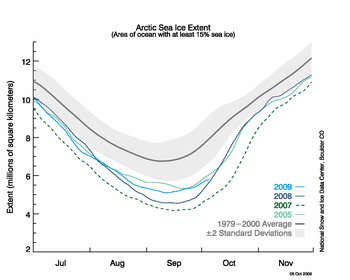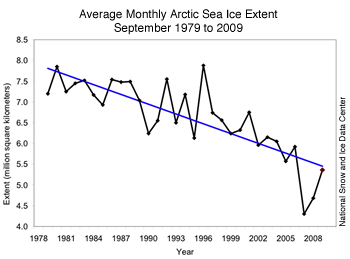6 October 2009http://www.richimag.co.uk/biofools/
Arctic sea ice extent remains low; 2009 sees third-lowest mark
Reference:
Kwok, R., and D. A. Rothrock. 2009. Decline in Arctic sea ice thickness from submarine and ICESat records: 1958–2008, Geophys. Res. Lett., 36, L15501, doi:10.1029/2009GL039035.



